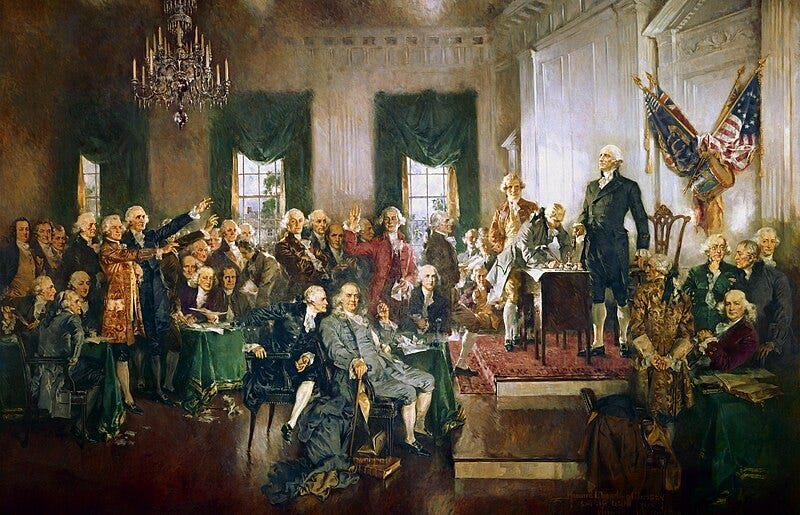The Spirit of John Lambert
Lambert's legacy died with the demise of the Instrument of Government . . . or did it?
This is the fourth and final installment of a series on the Instrument of Government. To read Part III of this series, click here.
As is clear from this expansive overview, Lambert and his colleagues were looking to create a powerful government, but one with bodies who would balance each other. The Lord Protector was to be head of state and would have many of the old attributes of kingship, but Parliament would have its own independent existence as the supreme legislature of the Commonwealth. The Council of State would have a supervisory role over both Parliament and the Lord Protector and would act as a bridle on any authoritarian moves by the latter. Like James Madison, John Lambert, if not the Author of the Instrument of Government, was its Tailor. The Instrument of Government was adopted on December 16, 1653, with Cromwell sworn in as the Lord Protector. In a foretaste of the inauguration of George Washington in 1789, Cromwell was sworn in wearing a plain suit with no regalia. Both Cromwell and Washington would have many of the powers of a king, but not the title.
The balance as envisioned by Lambert in the Instrument of Government lasted only until May 1657 when, due to new developments, it was replaced with the Humble Petition and Advice. This sought to recreate a bicameral Parliament, allow the Lord Protector to nominate his heir, and for Cromwell to take the office of king. Cromwell, upon learning the Army would not serve a monarch, turned down the offer of the crown but accepted the rest of the revisions. It mattered little: he was effectively king anyway.[1] Lambert was disgusted and resigned rather than take a new quasi-monarchial oath to Cromwell. Cromwell himself died in 1658 to be succeeded by his eldest surviving son, Richard. Richard Cromwell, however, fell from power in 1659. A year later in 1660, the monarchy returned in the person of Charles II, the son and heir of the executed Charles I.
Given these developments, the Instrument of Government seemingly matters little in wider constitutional history. It lasted less than four years and was abortive; the monarchy returned and still governs Britain to this day. Yet, it was the first time in the English-speaking world that an attempt at a written constitution with separation of powers. When a new group of revolutionaries met in Philadelphia in 1787 to revise an old constitution and ended up drafting a new one, it is inconceivable they were not aware of the Instrument of Government. Further research might yield a smoking gun, but it is safe to say that the Instrument of Government was in the minds of Alexander Hamilton, James Wilson, Edmund Randolph, and Benjamin Franklin as they thrashed out what the government of the United States was going to look like. If the spirit of John Lambert was hovering around in 1787, such a sight might have convinced him he left a great legacy after all.
[1] Kishlansky, A Monarchy Transformed, 211–12.







